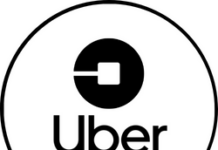This website and its content are not intended to provide professional or financial advice. The views expressed here are based solely on the writer’s opinion, research, and personal experience, and should not be taken as factual information. The author is not a financial advisor and lacks relevant certifications in that regard. We highly recommend consulting a qualified financial advisor before making any investment decisions, as the information presented on this site is general in nature and may not be tailored to individual needs or circumstances.
Uber Technologies, Inc. (UBER) trades at $57.80, showcasing resilience and adaptation in a rapidly evolving market. The company’s journey from a ride-sharing pioneer to a major player in delivery services highlights its ability to navigate through economic and tech sector shifts.
Financially, Uber’s performance is robust. The company reports a revenue of $35.95 billion, with a gross profit of $14.25 billion and a net income of $1.05 billion, reflecting its earnings per share of $0.52. This progress is indicative of Uber’s move towards profitability, despite typical tech sector challenges.
Uber’s financial health is further evident in its balanced financial ratios. A current ratio of 1.14 and a debt-to-equity ratio of 1.17 demonstrate a well-managed balance between assets and liabilities. Additionally, a return on equity (ROE) of 12.80% and a return on assets (ROA) of 3.10% underscore the company’s effective use of equity and assets.
In the stock market, Uber’s recent performance has gained investor confidence, evidenced by a 123% increase in its 52-week price. The beta value of 1.33 points to higher volatility, typical for growth-stage tech stocks.

Uber’s Financial Health
Uber’s financial profile showcases its stability and growth potential in the competitive tech market. The company’s latest financial statements reveal a strong liquidity position, with a current ratio of 1.14, indicating its ability to cover short-term obligations. The quick ratio, closely aligning at 1.13, reinforces this financial stability.
Debt management is crucial for Uber. Its debt-to-equity ratio is at a balanced 1.17, suggesting a moderate use of debt in operations. The debt-to-EBITDA ratio at 4.36 and an interest coverage ratio of 2.67 demonstrate Uber’s capability to manage and service its debt effectively.
Operational efficiency is evident through metrics like return on equity (ROE) at 12.80% and return on assets (ROA) at 3.10%, indicating profitable use of shareholders’ investments and assets. Revenue per employee stands at approximately $1.10 million, with profits per employee at $32,104, highlighting efficient revenue generation.
Stock price statistics further illustrate Uber’s financial health. The company’s stock witnessed a significant 123% increase over the last 52 weeks. The 50-day and 200-day moving averages are $55.11 and $44.67, respectively, with a Relative Strength Index (RSI) of 43.57, suggesting a balanced market position.
In essence, Uber’s financial health, marked by effective liquidity and debt management, operational efficiency, and encouraging stock performance, sets a strong foundation for its future growth and investor appeal.
Stock Performance Analysis

Uber’s stock has shown a remarkable performance recently, with a 123.08% increase in the 52-week price, reflecting strong investor optimism. The company’s stock is more volatile than the broader market, evidenced by a Beta value of 1.33, which indicates both potential risks and opportunities for significant returns.
The stock’s moving averages, with a 50-day average of $55.11 and a 200-day average of $44.67, suggest a steady upward trend, reinforcing positive market sentiment. The Relative Strength Index (RSI) at 43.57 suggests that the stock is neither overbought nor oversold, indicating stability in its current price.
Short interest stands at 73.59 million shares, or 3.58% of outstanding shares, showing a moderate skepticism among some investors. However, Uber’s strong financials, including $35.95 billion in revenue and $1.05 billion in net income over the last 12 months, bolster investor confidence.
Overall, Uber’s stock performance paints a picture of a company with solid market positioning and investor trust. Despite some inherent risks due to volatility, the financial indicators and market trends point towards a positive future outlook.
Future Growth Prospects
Uber’s potential for significant growth hinges on key factors and strategic decisions that point to a promising future. Analysts project an increase in Uber’s Free Cash Flow (FCF), anticipating $2 per share in 2024 and possibly reaching $3.50 per share by 2026. This forecast underscores Uber’s improving profitability and effective cash management.
The company’s diversification into food delivery and freight logistics, beyond its core ride-sharing services, is central to its growth strategy. This expansion not only broadens Uber’s revenue base but also reduces risks linked to market segment dependence.
Technological innovation and market expansion are also vital to Uber’s growth. Investments in autonomous driving technology and exploring new geographic markets offer substantial opportunities for expansion and redefining Uber’s operations.
Strategic partnerships are enhancing Uber’s competitive edge, potentially opening new growth avenues, particularly where Uber can leverage its platform and user base. Additionally, favorable external market trends, such as increasing urbanization and the rising popularity of on-demand services, support Uber’s business model.
Investor Sentiment and Market Opinions
Investor sentiment and market opinions on Uber are varied, reflecting a range of perspectives about the company’s potential. Many investors are optimistic, citing Uber’s expansion into new business areas like food delivery and freight services as positive indicators of future growth. They acknowledge Uber’s shift towards profitability and its impact on long-term potential.
However, there are also cautious voices among investors. Concerns center around regulatory challenges, competitive pressures in the ride-sharing and delivery markets, and the need for ongoing investments in technology and infrastructure. These factors are seen as potential risks that could impact Uber’s growth trajectory.
Market analysts contribute to these diverse opinions. Some are bullish on Uber, predicting a strong upward trajectory based on current trends and opportunities. Others remain more neutral, emphasizing the need for continuous innovation and operational efficiency to sustain competitiveness.
Uber’s Strategic Moves and Their Impact
Uber’s strategic decisions have been pivotal in shaping its current market position and will likely influence its future trajectory. These moves range from diversification of services to technological investments and strategic partnerships, each playing a unique role in Uber’s growth story.
Diversification of Services: One of Uber’s significant strategic moves has been diversifying its service offerings. Apart from its core ride-hailing business, the company has made successful forays into food delivery with Uber Eats and entered the freight logistics market. This diversification not only opens new revenue channels but also helps mitigate risks associated with dependence on a single service line. The success of Uber Eats, in particular, has been a testament to the company’s ability to adapt and thrive in different market segments.
Technological Investments: Investment in technology, especially in areas like autonomous driving, is another critical strategic move by Uber. While this involves significant expenditure and carries inherent risks, the potential payoff is substantial. Autonomous driving technology could revolutionize the transportation sector and position Uber at the forefront of this transformation. However, it’s important to note that this area is highly competitive, with many tech giants and automotive companies investing heavily.
Global Expansion: Uber’s expansion into new geographic markets is a strategic effort to tap into the growing demand for ride-sharing and delivery services worldwide. While this global expansion offers immense growth opportunities, it also brings challenges, including navigating different regulatory landscapes and local competition.
Strategic Partnerships: Uber has also engaged in strategic partnerships with various companies, including automakers and tech firms. These collaborations aim to enhance its service offerings, improve operational efficiency, and accelerate technological advancements. Such partnerships can provide Uber with a competitive edge, especially in areas like electric vehicles and digital payments.
Response to Regulatory Challenges: Uber’s approach to regulatory challenges has been proactive and adaptive. The company has engaged in dialogues and negotiations with government authorities in various markets to address concerns and find mutually beneficial solutions. This approach is crucial for sustaining operations in different regions and maintaining a positive brand image.
Focus on Sustainability: Recently, Uber has increased its focus on sustainability, recognizing the growing importance of environmental concerns among consumers and stakeholders. This includes initiatives to increase the use of electric vehicles on its platform and reduce its overall carbon footprint, aligning with global trends towards sustainability.
Conclusion and Investment Outlook
In conclusion, Uber Technologies, Inc. offers a dynamic investment opportunity characterized by its recovery and growth in diverse service areas, strategic technological advancements, and a strong global presence. While the company demonstrates significant potential for long-term growth, particularly with its focus on innovation and sustainability, investors should weigh these prospects against the inherent risks associated with regulatory challenges, market volatility, and intense competition. This balance of opportunities and challenges makes Uber an intriguing option for those with a long-term investment perspective and an understanding of the evolving tech and transportation sectors.
StockHax strives to provide unbiased and reliable information on cryptocurrency, finance, trading, and stocks. However, we cannot provide financial advice and urge users to do their own research and due diligence.
Read More


